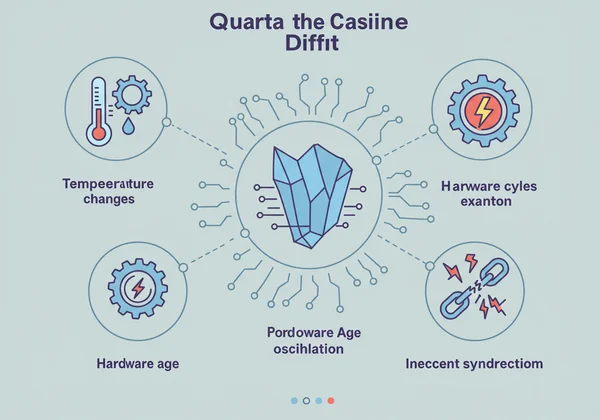Online Digital Clock vs. System Clock: Achieving Atomic Accuracy
Most of us take the time displayed in the corner of our computer screens for granted. We trust it to schedule meetings, meet deadlines, and coordinate with teams across the globe. But is my computer clock wrong? The unsettling truth is that your PC's built-in clock is often less reliable than you think, a fact that can have significant consequences. When it comes to true system clock accuracy, the standard clock on your device falls short compared to the precision of an online atomic clock.
Local system time is prone to "drifting," accumulating small errors that can add up to seconds or even minutes of inaccuracy. This discrepancy might seem minor, but in a world driven by data, global collaboration, and split-second decisions, it matters. Fortunately, a superior solution exists. An accurate online clock synchronized with atomic time servers offers a level of precision your local device simply cannot match. Let's explore the technical differences and discover why upgrading your time source is crucial.

Understanding Your PC's System Clock Accuracy
Your computer's internal clock is a marvel of engineering, but it's built on a foundation that has inherent limitations. It doesn’t connect to a universal time source by default; instead, it relies on its own internal hardware to keep pace. While sufficient for casual use, this design is the root cause of its potential inaccuracy, creating a clear distinction when analyzing PC clock vs atomic time.
The Hidden Problem: Why PC Clocks Drift
The timekeeping component in most computers is a quartz crystal oscillator. This tiny crystal vibrates at a very specific frequency when an electric voltage is applied. The computer counts these vibrations to measure the passage of time. However, this process isn't perfect. The phenomenon known as clock drift occurs because the crystal's vibration frequency can be affected by several factors, causing it to speed up or slow down slightly over time.
Think of it like a mechanical watch that needs occasional adjustment. While far more stable, the quartz crystal in your PC is susceptible to minor fluctuations. These deviations, though minuscule from one second to the next, accumulate. Over a week or a month, your system clock can drift by several seconds, creating a noticeable gap between its displayed time and the actual, precise time.
Beyond Local Settings: Factors Affecting PC Time Reliability
Several environmental and hardware-related issues contribute to these system time variations. Understanding them reveals why relying solely on your local clock for critical tasks is a risky proposition.
-
Temperature Changes: The frequency of a quartz crystal is sensitive to temperature. As your computer heats up during intensive tasks and cools down when idle, these temperature swings can alter the crystal's vibration rate, directly impacting timekeeping.
-
Hardware Age: Like any electronic component, the quartz oscillator degrades over time. An older computer is more likely to experience significant clock drift than a new one.
-
Power Cycles: While a small CMOS battery on the motherboard keeps the clock running when the computer is off, interruptions or a dying battery can lead to significant time loss or resets.
-
Infrequent Synchronization: Most operating systems attempt to periodically sync with an internet time server. However, these updates can be infrequent, delayed by network issues, or disabled by system settings, allowing significant drift to occur between syncs.

The Precision Standard: Online Atomic & NTP Clocks
To overcome the limitations of local hardware, we must turn to a global standard: Coordinated Universal Time (UTC), maintained by a network of atomic clocks. An online atomic clock is not a physical device on your desk but a service that provides time data directly from these ultra-precise sources. This is where the true power of a tool like the realtime clock comes into play.
How Our Online Clock Service achieves Atomic Time Synchronization
When you use our online clock service, you are not seeing your computer's local time. Instead, our service establishes a direct connection to a network of time servers. These servers are meticulously synchronized with atomic clocks—the most accurate timekeeping devices known to humanity. Atomic clocks measure time based on the resonant frequency of atoms, a physical constant that is incredibly stable and unaffected by environmental factors.
This process ensures that the time displayed on our website is a true reflection of UTC, corrected for your specific time zone. It bypasses the unreliable quartz oscillator in your computer entirely, eliminating the problem of clock drift. The result is a time display you can trust for any application, from coordinating a global product launch to timing a scientific experiment. For those who need absolute precision, a free online clock is the only reliable choice.
NTP: The Backbone of Accurate Online Timekeeping
The magic that makes this synchronization possible is the NTP protocol, or Network Time Protocol. NTP is a sophisticated internet protocol designed specifically to distribute and synchronize time across computer networks with extreme precision. It's the engine that powers the accuracy of every reliable online clock.
Here’s how NTP works: it calculates the round-trip delay of data packets between your device and the time server. It also accounts for network latency and jitter. By using complex algorithms, NTP can compensate for these delays to synchronize a client's clock to within a few milliseconds of the server's time. This continuous, intelligent adjustment process is fundamentally different from your PC’s simple, occasional update, highlighting the critical difference in the NTP vs system time debate.

When Every Second Counts: The Importance of Accurate Time
For many, a few seconds of inaccuracy may seem trivial. But for professionals like global project manager Elena or university lecturer Professor Thompson, precision is non-negotiable. An accurate clock is not just a convenience; it's a foundational tool for success, productivity, and coordination in a connected world.
Critical Use Cases for Microsecond Precision
In numerous fields, time accuracy matters down to the millisecond. Inaccurate timekeeping can lead to failed transactions, flawed data, and compromised security.
- Global Project Management: For teams spread across continents, synchronizing tasks and virtual meetings requires a single, trusted time source. A manager using a reliable world time zone clock ensures that a deadline of 5:00 PM is the same moment for everyone, regardless of their local clock's drift.
- Financial Trading: Algorithmic trading systems execute millions of orders per second. A discrepancy of even a fraction of a second can mean the difference between profit and catastrophic loss.
- Online Examinations: Universities and certification programs rely on precise timing to ensure fairness. A student's submission could be incorrectly marked as late if the server time and their local clock are out of sync.
- Digital Forensics and Cybersecurity: Investigators depend on accurate timestamps in system logs to reconstruct the timeline of a security breach. Inaccurate clocks can render this crucial evidence unreliable.
Enhancing Productivity & Coordination with Real-Time Clocks
Beyond these critical applications, using a precise online digital clock enhances everyday productivity. For a lecturer managing a class, a large fullscreen digital clock projected for all students ensures everyone is aligned during exams and presentations. The ability to instantly switch to an analog clock online can also be a powerful visual aid for explaining the passage of time.
For designers and productivity enthusiasts like Leo, a customizable clock is essential for creating a perfect digital workspace. Being able to modify fonts, colors, and backgrounds to match their aesthetic, while trusting the underlying accuracy, combines form and function seamlessly. Whether you need a simple 12-hour display or a professional 24-hour format, a precise time source is the bedrock of an organized digital life.

Upgrade Your Time: Embrace Unmatched Accuracy with an Online Digital Clock
Your computer’s system clock is a useful but ultimately fallible tool. It is susceptible to drift from temperature, age, and infrequent updates, making it an unreliable source for any task where precision is key. The gold standard for timekeeping is, and always will be, atomic time.
By using a dedicated online clock service, you bypass your local hardware's flaws and tap directly into the global network of atomic clocks via the robust NTP protocol. This guarantees you are operating on the most accurate, reliable time possible. Don't let clock drift introduce uncertainty into your work and life.
Ready to experience unparalleled precision? Visit our homepage now and see the difference a truly accurate clock can make.
Frequently Asked Questions About Time Accuracy
How accurate is an online digital clock?
A high-quality online digital clock that syncs with NTP servers, like our service, is exceptionally accurate. It can maintain synchronization with UTC to within a few milliseconds, making it far more precise than a standard computer system clock which can drift by several seconds per month.
What is the most accurate online clock?
The most accurate online clocks are those that explicitly state they synchronize with atomic time servers using the Network Time Protocol (NTP). Our service is built on this principle, offering a highly accurate time source by constantly referencing the global time standard, ensuring you get a reliable and precise display every time you visit.
How does an online clock sync with atomic time?
An online clock syncs with atomic time through the internet by connecting to a network of specialized servers. These servers, in turn, are synchronized directly with atomic clocks. Using protocols like NTP, the online clock service calculates and compensates for network delays to provide you with a time that is a precise reflection of Coordinated Universal Time (UTC).
What is the difference between NTP and local system time?
Local system time relies on your computer's internal quartz crystal oscillator, which is prone to inaccuracies or "drift" due to factors like temperature and age. NTP, or Network Time Protocol, is an internet standard that actively synchronizes your time with ultra-accurate atomic clock servers, constantly correcting for any drift and network latency to ensure high precision. It's the difference between an isolated estimate and a connection to a global standard.